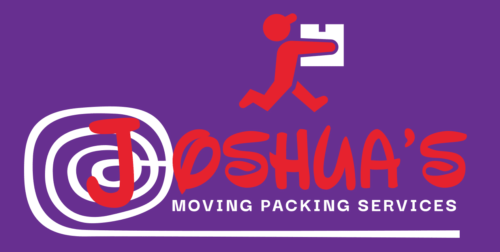Moving costs in the Bay Area can vary significantly based on several factors. While there are various aspects to consider, financial planning is paramount. Whether you’re moving across town or state, understanding how moving companies…
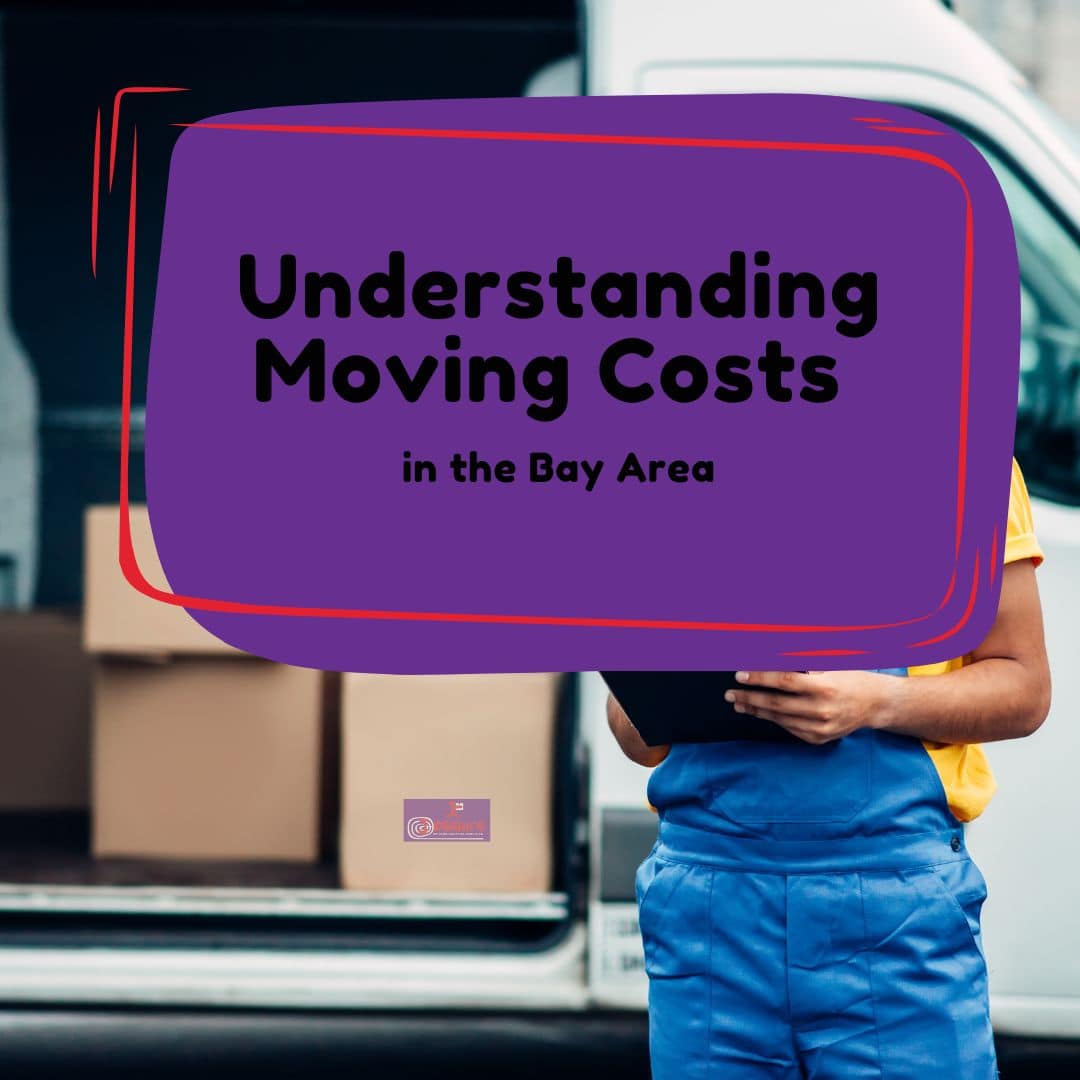
Understanding Moving Costs in the Bay Area
December 30, 2024
Uncategorized
Moving costs in the Bay Area can vary significantly based on several factors. While there are various aspects to consider, financial planning is paramount.
Whether you’re moving across town or state, understanding how moving companies calculate costs can help you plan your budget and avoid surprises. This guide explains the key factors influencing moving expenses and offers tips for managing your budget effectively.
Table of Contents
- Factors That Influence Moving Costs in the Bay Area
- How Moving Companies Calculate Costs
- Tips to Manage Your Moving Budget
- Common Moving Cost Add-Ons
- FAQs
Factors That Influence Moving Costs in the Bay Area
The Bay Area moving companies offer higher rates than other U.S. regions. The region is densely populated with a high cost of living, traffic congestion, and an up-to-the-minute demand for professional moving services. Additionally, the Bay Area has a unique urban layout and terrain, including steep hills, which, combined with urban density and congestion, make moving costs high.
Although moving prices vary from one mover to another, basic universal factors influence Bay Area moving costs. Let’s break down these crucial cost-determining factors below.
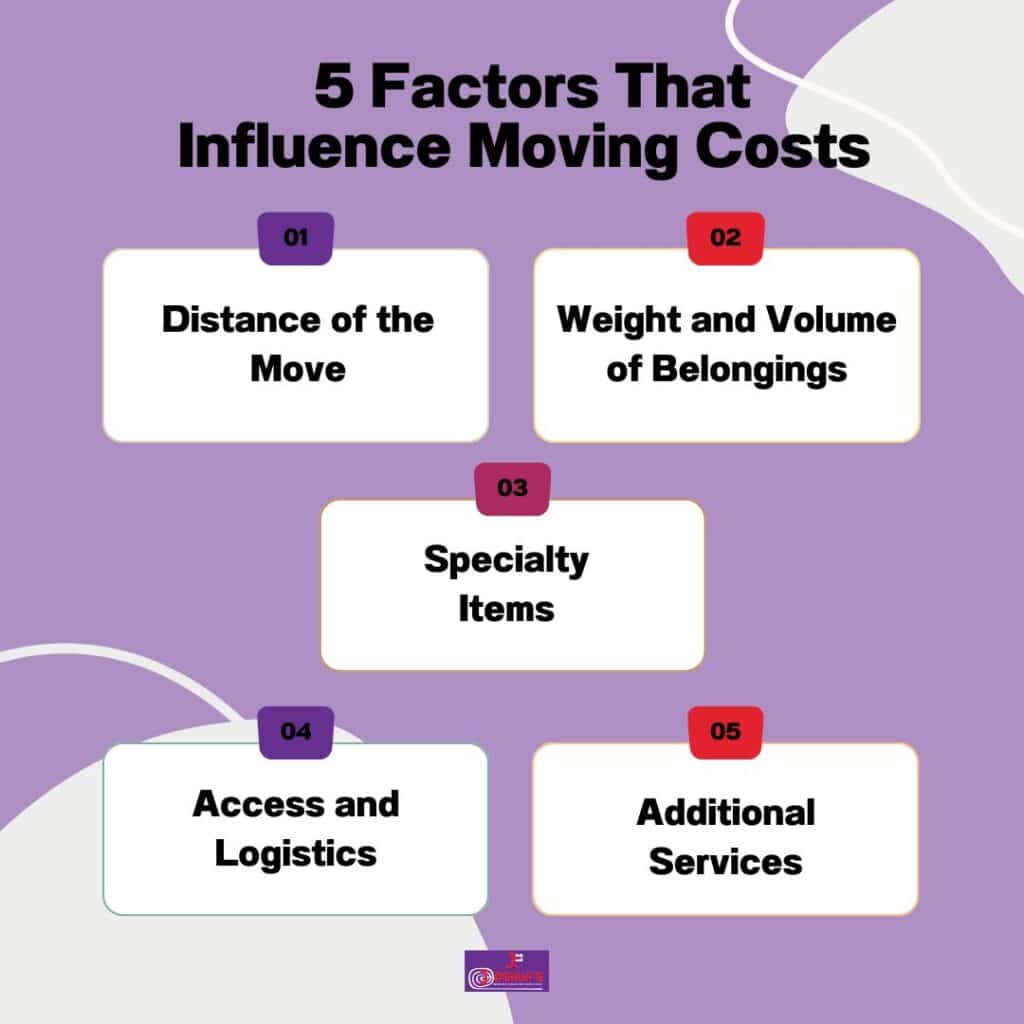
1. Distance of the Move
When calculating your overall moving costs, movers consider the distance between your current and new destination. The Bay Area companies charge local moves per hour, while the long-distance model often goes by the mile.
What sets local vs. long-distance moving costs apart?
Local and long-distance have different pricing structures. Moving within the Bay Area’s urban locations, like San Jose to San Francisco, is cheaper than moving across California’s border States. This price difference occurs because moving within the Bay Area takes a shorter time and less fuel, while long distances to states outside California require more fuel, time, and logistics.
That said, the average cost of local moves (within a 100-mile radius) in the Bay Area is $150-250 per hour. Movers charge per every hour they work, number of workers, and moving truck size.
On the other hand, long-distance moving (beyond 100 miles) in the Bay Area ranges from $1,500 to $12,000, depending on several factors, including distance and the volume of belongings. On several occasions, these cross-country moves include additional costs like crew stays.
2. Weight and Volume of Belongings
The volume and weight of your belongings impact the final moving cost. The weightier the items you want to move, the higher the cost of local and long-distance moves.
Also, the more your belongings, the higher your moving cost will be. If you’re moving minimal, light belongings, you’ll require fewer workers and a smaller truck, unlike moving a large home with huge, bulky loads.
But why is this so? The weight and volume of your items affect the price in the ways below.
- Truck space: Weight and volume determine how spacious a moving truck should be. For many bulky belongings, your mover will allocate more truck space at a higher cost.
- Labor time: Movers require extra time to load and offload heavy things, unlike when handling lighter, less bulky ones. The more items you have, the more labor and hours you’ll require to move them, ultimately increasing your cost.
- Packing materials and containers required: Depending on how heavy or oversized your load is, you’ll need various packing materials, such as bubble wraps, boxes, and packing papers. You’ll pay extra for additional packaging materials if you have many personal belongings and a lesser amount for fewer belongings.
- Cost of transportation: The load size and weight determine your transportation cost when moving. Transporting bulky items increases fuel consumption and transport costs, directly affecting your overall moving quote.
3. Specialty Items

Moving high-value specialty households is overwhelming. In one study, 45 % of respondents cited fragile items like ceramics as the most stressful belongings to move.
Fragile items like glassware, artwork, or weather-sensitive items require special handling and packaging to prevent losses. Some furniture and appliances also involve professional disassembling and reassembling.
Additionally, bulky furniture, grand pianos, automobiles, vintage chandeliers, and heavy power equipment not only require specialized workers but also extra truck space or, sometimes, a separate moving vehicle. This presents unique moving challenges.
While special handling, covering, and moving of such items ensure their safe delivery to your destination, they attract specialty charges, further inflating your moving cost.
4. Access and Logistics
Among the key factors influencing moving expenses is access and logistics issues.
The Bay Area’s urban zones, such as San Jose, Oakland, and San Francisco, present distinct moving challenges. From parking restrictions to steep hills, toll bridges, narrow streets, and tall buildings without elevators, Bay Area movers face unique challenges that contribute to increased moving costs.
All these challenges make accessibility to homes difficult, forcing moving companies to use more time and personnel, raising your total moving costs. Your home layout is another variable contributing to a high moving cost. Some homes have wide hallways and large staircases that are easily accessible, while others include tight spaces and narrow, hard-to-reach staircases.
This means you’ll spend more when moving if movers can’t easily access your premises. For instance, a person living in a 2-bedroom house on a building’s first floor is likely to pay less compared to another residing in the same 2-bedroom apartment in a high-rise building with narrow staircases.
Moving trucks cannot access certain areas without a parking permit. They must apply for one at a fee through the San Francisco Municipal Transportation Agency (SFMTA). Such costs indirectly determine your moving quote.
5. Additional Services
Additional services directly affect your overall cost of moving in the Bay Area. Here are the extra services significantly impacting moving costs:
- Packing and unpacking: Getting a professional to pack and unpack your belongings results in a higher moving cost.
- Providing packaging materials: Movers charge a fee for materials like boxes, bubble wrap, and wrapping papers, which increases your moving cost.
- Loading and offloading: While it saves you stress and time, loading and offloading inflates your overall cost if done by the moving company.
- Furniture or appliances disassembling and reassembling: Large, bulky, complex furniture and appliances may be hard to disassemble and assemble. Moving companies offer this service at an additional cost.
- Moving insurance: Although most movers often offer liability insurance coverage, you’ll want to protect your high-value belongings by purchasing additional moving insurance. While it’s advisable to insure your jewelry or artwork, it raises your moving prices.
How Moving Companies Calculate Costs
Moving companies in the Bay Area have unique methods of determining your end price. However, the most common standard pricing models include hourly rates, weight-distance models, and flat rates. Let’s break this down further below.
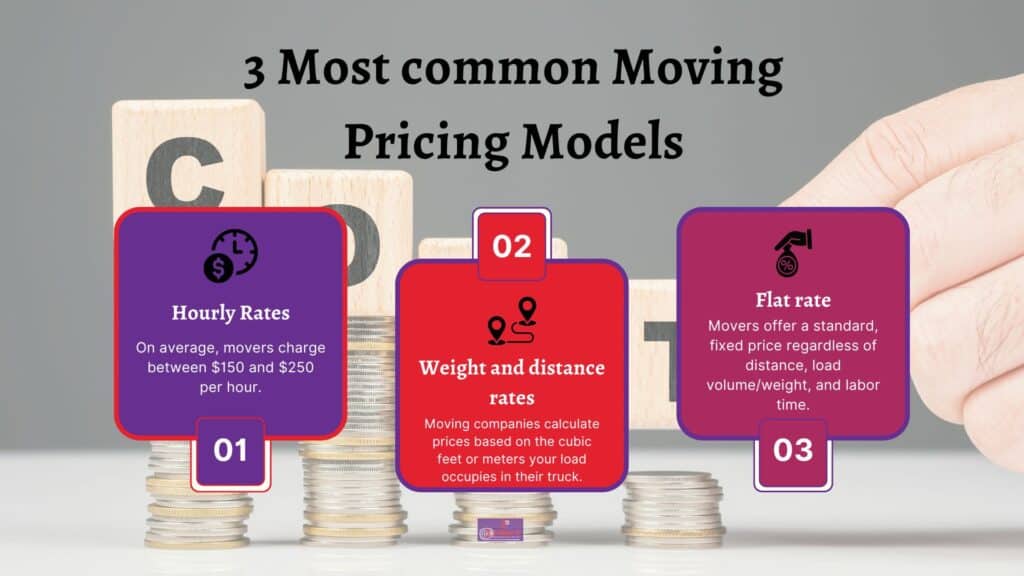
Hourly Rates
Most moving companies charge by the hour for local moves within a 100-mile radius. Typically, the more time movers take to complete your moving process, the higher you pay for labor.
On average, movers charge between $150 and $250 per hour. These rates mostly cover a small crew of 2 workers and a moving truck. You may have to pay more, up to $210 per hour, if your belongings are more and require 3 or more movers.
Weight and distance rates
Unlike local moves, Bay Area movers charge long-distance moves depending on the weight of your load or the distance from the current to a new location. Per-mile rates apply when you want to move beyond 100 miles outside your current location to different cities or states.
For the weight-based model, movers weigh your belongings using a specialized scale to determine how much you pay per ton or kilogram. Alternatively, they can weigh the moving truck before and after loading to know your load’s weight before calculating the ultimate moving cost.
Some companies use volume-based pricing for local moves. After measuring the approximate space your load can occupy in their truck, the moving companies calculate prices per cubic feet or cubic meters.
A virtual or in-home visit is essential to accurately determine weight and volume rates. Scheduling a home meeting with a professional estimator helps you get a clearer picture of the amount of moving work versus pricing.
Flat rate
Flat rates are unpopular for local and long-distance moves. Here, movers offer a standard, fixed price regardless of distance, load volume/weight, and labor time.
While it enhances transparency, flat rates are expensive for short distances. To understand how costs are calculated in this model, talk to your movers and ask serious questions in advance.
When considering hourly vs. flat movers, ensure you ask about extra services included to see which model best suits your needs. Hourly rates are flexible, more accurate, and customizable to suit your unique moving needs. Conversely, flat rates are fixed and not ideal for small moves.
Many Bay Area movers provide three pricing options:
- Full service: This is a convenient but convenient option. Professional movers do everything for you, from packing to loading to offloading.
- Partial service: It is where you share moving-related tasks with your mover at a cheaper price. For instance, you may pack and load while movers drive the moving truck to your destination.
- Self-service: This is the most time-consuming option but the most affordable. Your mover provides a truck and driver while you do the rest, including decluttering, packing, loading, offloading, assembling, and dissembling.
When planning a local or long-distance move, request detailed quotes and estimates from various movers first. You may visit several companies to get an estimate or request an online quote.
Secondly, schedule an in-home survey to determine the quantity of your belongings accurately.
These steps ensure you get the best moving offer without compromising the safety of your items.
Tips to Manage Your Moving Budget
Despite the Bay Area’s high prices, there are various practical ways to reduce moving costs considerably. Below are some actionable, budget-friendly moving tips.
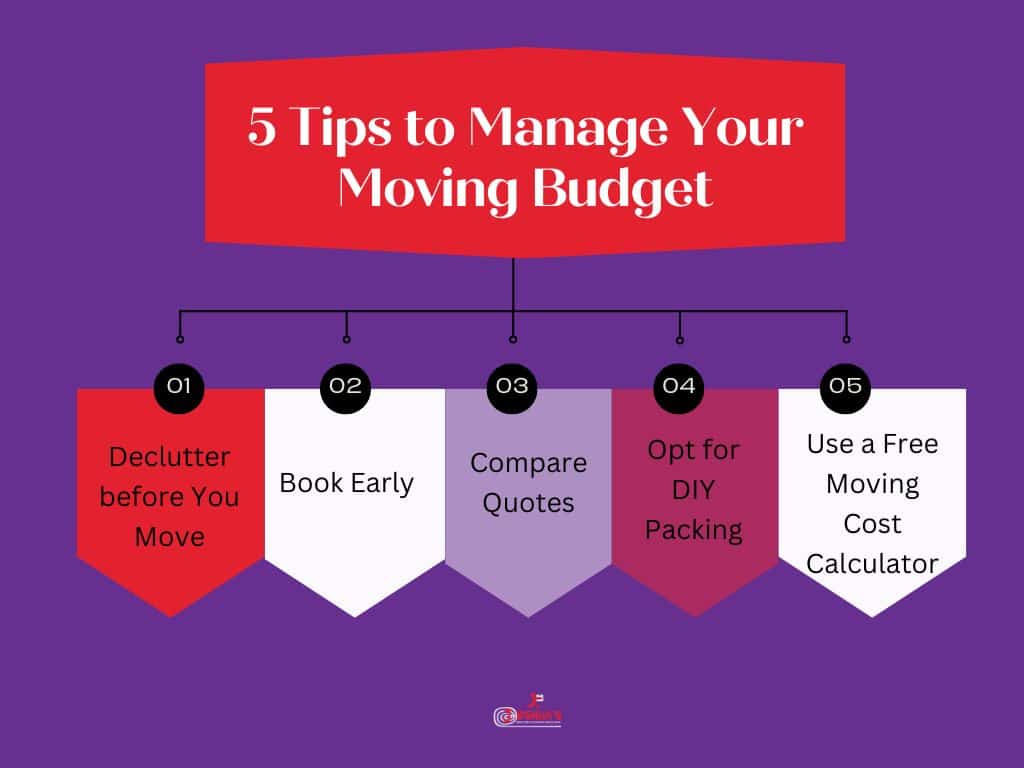
- Declutter before You Move: The lesser your load, the better the moving cost. Remove unnecessary house items by donating, recycling, or donating them to reduce your moving load and expenses.
- Book Early: To secure friendlier rates, plan and book your move early, possibly 6-8 weeks in advance. Additionally, early booking is essential if you’re moving during peak seasons when movers are scarce and expensive.
- Compare Quotes: Don’t hire the first mover you engage. Request quotes from several reputable Bay Area moving companies and compare them to determine the best offer according to your budget and moving needs.
- Opt for DIY Packing: While you can enjoy the efficiency of professional packing services, it comes at a cost. Buying your packaging supplies and packing non-fragile items yourself reduces labor costs significantly. Also, consider doing other tasks, including unpacking and offloading, to save on moving costs.
- Use a Free Moving Cost Calculator: Establish Bay Area moving estimates in advance using the San Carlos moving company’s free moving cost calculator to help you get the best offer. Rough moving cost estimates ensure proper planning and a streamlined, organized, cost-effective moving process.
Common Moving Cost Add-Ons
When planning your move, it’s critical to understand hidden costs that could inflate your quote. These moving add-on charges include:
- Packing materials: When packing for yourself, you’ll require packing materials such as special boxes, bubble wraps, wrapping papers, and protective tapes. Purchasing or renting such supplies from movers raises moving costs.
- Long carry fees: When the distance from your apartment to the moving truck is unusually long, some movers will charge you long carry fees, which increases your moving cost.
- Stair fees: Some staircases are super-small, requiring movers to add more workers to move your belongings safely. Confirm with your mover beforehand if they charge stair fees to avoid high costs.
- Temporary storage: Using a storage unit to store your belongings before moving into your new destination is an excellent option. However, you must pay extra fees for movers to keep your items until you’re ready.
Understanding moving costs in the Bay Area will help you plan your move and find a reputable mover. Our team of licensed, experienced movers ensures transparency and fair pricing.
FAQs
How much does it cost to move in the Bay Area?
The average moving cost in the Bay Area is $500-$2,000 for local moves, while the rate for long-distance moves starts from $3,000. However, moving companies offer varying quotes depending on whether they offer hourly rates, weight/volume pricing, or a fixed rate. For an accurate, comprehensive, personalized quote, schedule a home survey where you can ask questions and receive professional recommendations.
Are moving companies more expensive during certain seasons?
Yes. Peak season moving season rates are higher and often apply during summer months, weekends, and holidays. The high rate is because there’s a higher demand for moving services during summer, making movers scarce. Consider scheduling your move for midweek, mid-month, early spring, late fall, or winter months when the demand is lower and off-peak moving discounts are plenty.
What should I ask when getting a moving estimate?
Getting accurate moving quotes depends on how well you understand the charges included in your contract. Ask your movers about moving insurance, extra services, payment terms, cancellation policies, deposits, and any other hidden fees that could impact your moving cost. These pertinent questions help you to compare different companies, ensuring you sign a contract with the most suitable one. Also, questions for movers protect you from unpleasant, costly moving surprises.

